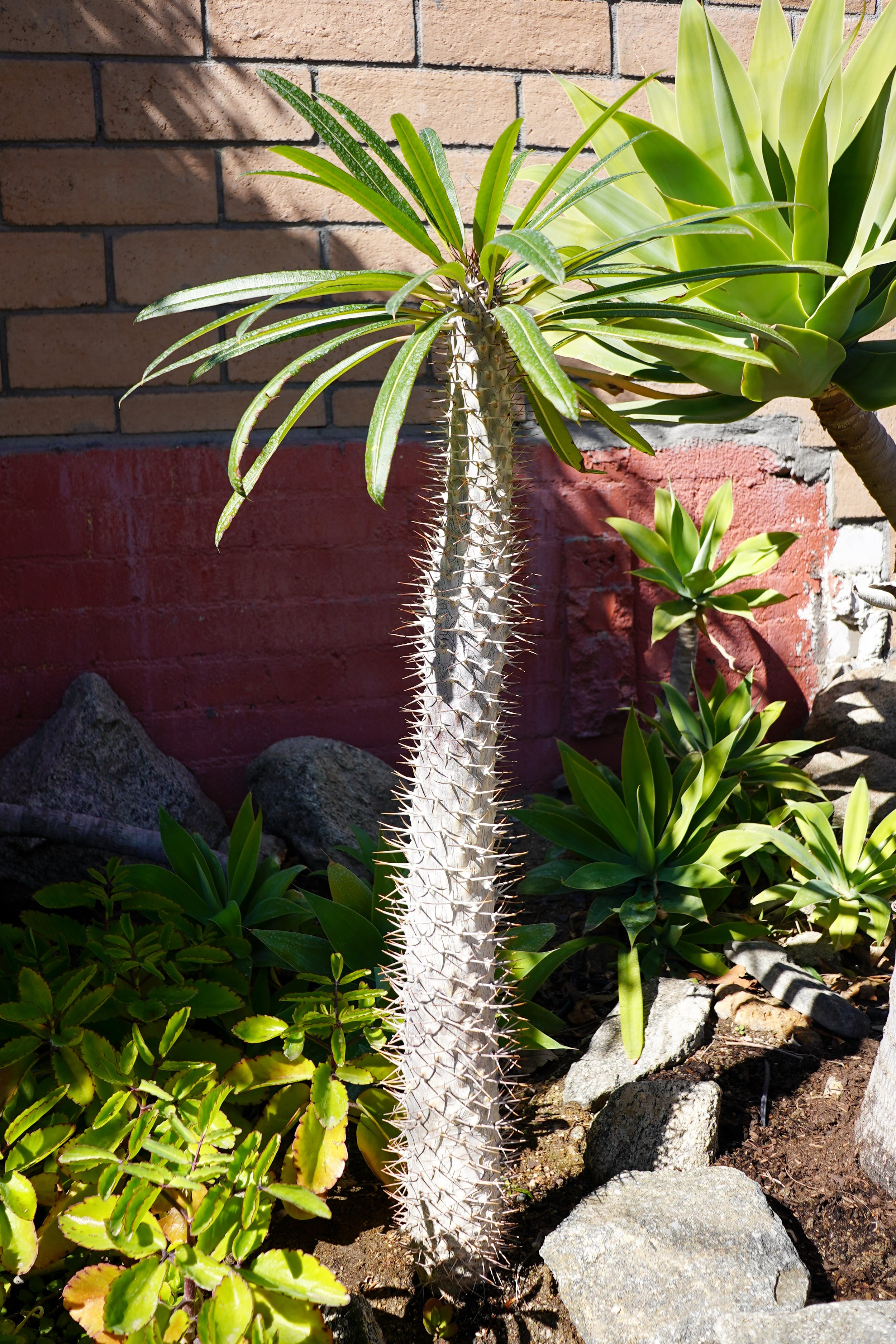In the enchanting realm of nature, the Madagascar palm (Pachypodium lamerei) captivates with its imposing presence and otherworldly beauty. A native of the Madagascar wilderness, this succulent marvel demands specific care to thrive and grace our homes for years to come. Embark on a journey of plant discovery as we delve into the delicate art of nurturing your very own Madagascar palm, a living testament to nature’s captivating allure.

Image: www.gdncnursery.com
Understanding the Needs of Your Madagascar Palm
Hailing from the arid plains of Madagascar, the Madagascar palm has adapted to a life of minimal water and ample sunlight. Its trunk is a repository of water, sustaining the plant through periods of drought. Understanding these fundamental needs is crucial for ensuring the plant’s health and longevity.
Watering Wisely: A Delicate Balance
Watering your Madagascar palm is a delicate dance, requiring attention to both frequency and volume. During the growing season (spring and summer), water the plant thoroughly but allow the top 2-3 inches of soil to dry between waterings. In the cooler months (fall and winter), reduce watering significantly, providing just enough to prevent the soil from completely drying out. Remember, overwatering can lead to root rot, a fatal condition for your palm.
Optimal Soil and Root Care
A well-draining soil is paramount for the Madagascar palm’s survival. A mixture of peat moss, perlite, and coarse sand mimics the plant’s natural habitat and ensures proper drainage. Repotting into a slightly larger pot is necessary as the plant matures. When repotting, handle the roots with care, as they are delicate and easily damaged.

Image: alovegarden.com
The Importance of Sunlight and Temperature
Like a sun-worshipper, the Madagascar palm thrives in bright, direct sunlight. Position it near a south-facing window or on a balcony where it can bask in the sunlight for at least six hours a day. Keep the temperature between 65-85 degrees Fahrenheit (18-29 degrees Celsius). Cold temperatures can damage the plant’s leaves, so avoid placing it in drafty areas.
Nourishing with Fertilizer
Fertilizing your Madagascar palm during the growing season provides essential nutrients for healthy growth. Use a fertilizer specifically formulated for cacti and succulents, and dilute it to half strength. Fertilize monthly during the spring and summer, but avoid fertilizing in the fall and winter when the palm is dormant.
Pests and Diseases: Ensuring Protection
Pests and diseases are a potential threat to the well-being of your Madagascar palm. Aphids, mealybugs, and spider mites can infest the plant, while fungal diseases such as stem rot and root rot pose a serious risk. Regularly inspect the plant for signs of pests or disease, and take appropriate measures using organic or chemical treatments.
How To Care For Madagascar Palm
Conclusion: A Labor of Love, Rewarded with Beauty
Nurturing a Madagascar palm is a testament to patience and care. By providing the right environment, you become the custodian of an exotic beauty that will grace your home with its architectural form and enduring presence. Remember, the well-being of your plant lies in your hands. Embrace the journey of caregiving, and witness the awe-inspiring resilience of nature unfold before your eyes.